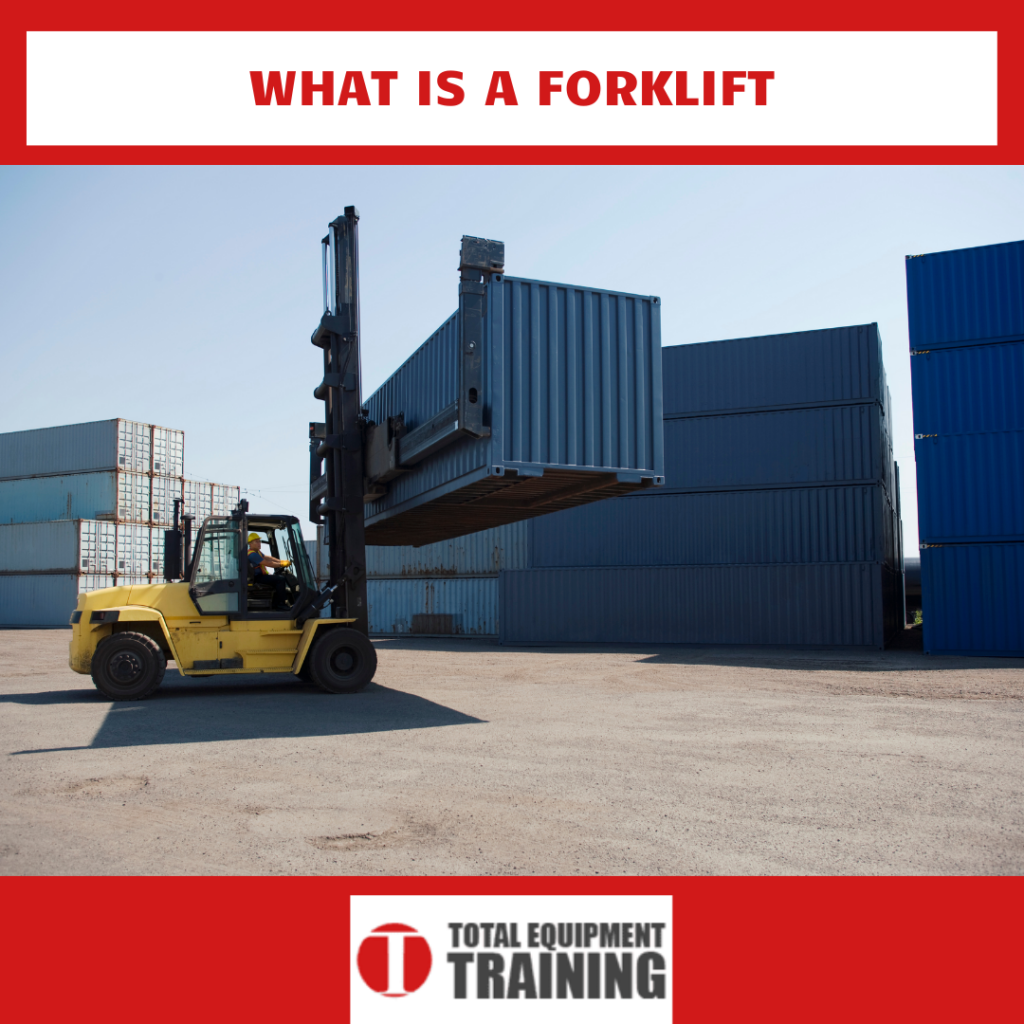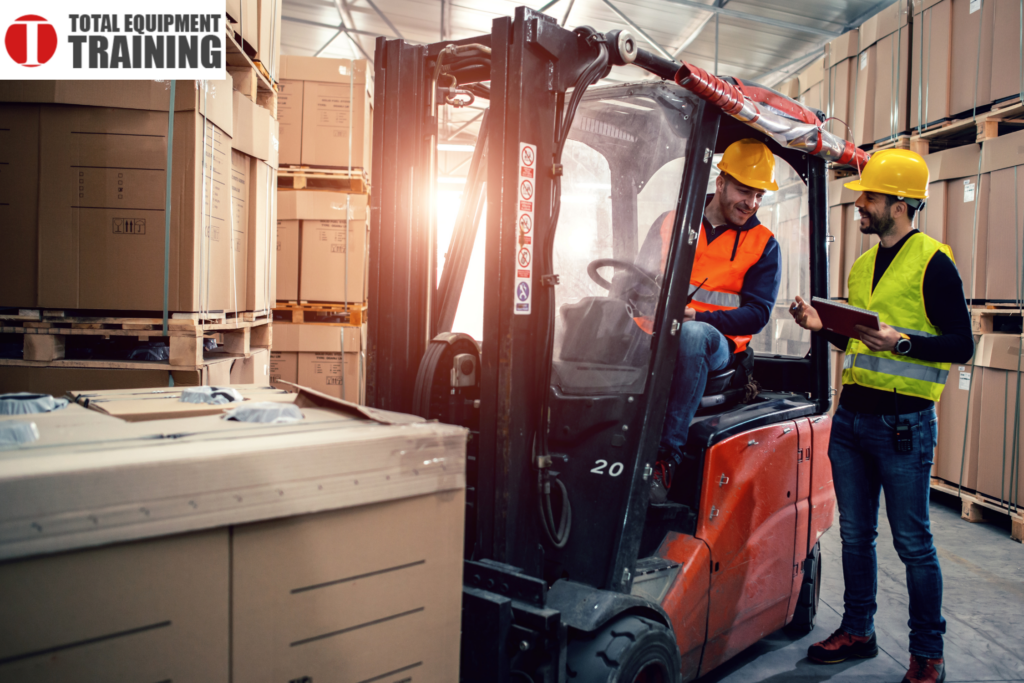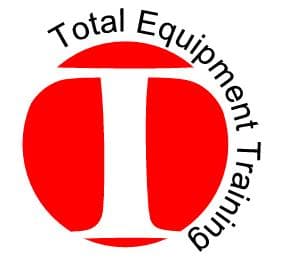
One of the greatest daily demands of the heavy equipment industry is the fast, safe, and efficient movement of loads between locations. Several implements and utilities have been developed toward this, and among them, especially when working within buildings, is the forklift.
A forklift is a small (relatively, when compared to other implements) industrial vehicle equipped with a powered pronged platform capable of lifting and lowering cargo. The cargo is moved by inserting the forklift’s prongs underneath it elevating or lowering to a safe operational height, and then driven to the required destination by the forklift operator.
Get Forklift Operator Training
Main Parts of a Forklift
Like in all advanced machinery, several smaller and independent components work together to help achieve the whole machine’s purpose. Forklifts are no exception. The major components that come into play during its function include:
Truck Frame – Like the chasis in a car, the truck frame is the metallic base where the counterweight, wheels, mast, overhead guard and operator panel are housed.
Counterweight – this is a weight attached to the rear of the truck frame that counter-balances the weight of the forklift’s load, preventing it from tipping over. Operators should be careful not to exceed the load limit, as doing so introduces a hazard to both the operator and the load.
Carriage – This is where the load is placed and lifted. It is comprised of the forks, protrusions at the carriage that lift the load from the bottom, and the load backrest, that helps stabilize the load.
Mast – This upright assembly at the front of the forklift is equipped with a pulley system that lifts or lowers the carriage, and the load on it.
Power Source – Depending on the type of forklift, various power sources can be used to enable its function, e.g., electric motors (powered by batteries), LP gas, or fossil fuels.
Total Equipment Training offers FREE forklift inspection forms to help you maintain OSHA compliance.
Classification of Forklifts
OSHA has further broken down classifications of forklifts into ‘classes’, distinguishable by the forklift’s primary power source and intended use.
- Class I: Electric Motor Rider Trucks – These are preferred for indoor utility, as they don’t produce emissions, and are quiet.
- Class II: Electric Motor Narrow Aisle Trucks – This class contains forklifts intended for spaces with limited mobility.
- Class III: Electric Motor Hand Trucks or Hand/Rider Trucks – Forklifts in this class are relatively smaller. The operator does not sit inside a cabin, but uses an exposed control panel and steer accessible from a standing height.
- Class IV: Internal Combustion Engine Trucks (solid/cushion tires) – The tires on forklifts in this class are not air-filled, and thus harder to puncture, while providing a smooth ride on indoor surfaces.
- Class V: Internal Combustion Engine Trucks (pneumatic tires) – Similar to the preceding Class IV, this category is mainly designed for outdoor use.
- Class VI: Electric and Internal Combustion Engine Tractors – This class contains machines mainly used for towing, instead of lifting.
- Class VII: Rough Terrain Forklift Trucks – Relatively larger than their counterparts, they are mainly employed in outdoor activities.
Learn more about OSHA Compliance for Forklifts
Types of Popular Forklifts Models
Total Equipment Training does not endorse any specific brand or model of forklift. This is an informative article and we want to do the best to educate our audience on the popular types of forklifts. Here is a breakdown of the popular forklift models in the heavy equipment industry:
- Hyster – They provide highly customizable forklift solutions for a variety of applications, from small indoor operations to container handling.
- Yale – They deal exclusively in manufacturing forklifts across all classes, making them a great one-stop destination for forklifts.
- JCB – JCB takes pride in manufacturing powerful, heavy-duty rough-terrain forklifts for outdoor use, along with a wide selection of other industrial and heavy machinery.
Read more here If you are interested in learning how to get forklift certifications.

Uses of Forklifts
The primary use of forklifts is to lift, lower, and move loads between points. The diversity of their utility is introduced in the work locations, design structure, and the nature of work to be done.
Forklifts in Warehouse
These common and recognizable forklifts resemble golf carts are used in warehouses to transport sizeable loads.
Counterbalance Forklift
These forklifts have the forks in the front, with a counterbalance on the rear of the truck frame. They come in various sizes and configurations.
Side Loader Forklift
Also used in warehouses and steel service centers, side loaders are operated from a sideways compartment. This makes them preferable for tight spaces, as they can operate without having to turn.
Forklift For Heavy-Duty
These are powerful forklifts capable of lifting heavier pallet loads much higher than regular warehouse forklifts.
Telehandler/Telescopic Forklift/Reach Forklift
This type of forklift combines both crane and forklift. It features an extendable arm with an articulating boom. The forks on the arm’s end allow for more versatile placement of pallet loads.
Reach Fork Truck
As the name implies, these forklifts mainly employed indoors can extend their forks and reach farther into warehouse racks.
Pallet Jack/Pump Trucks
These smaller, specialized forklifts can only lift small loads. They are very maneuverable and cost-efficient.
Forklift for Rough Terrain
These forklifts are designed for outdoor work on uneven surfaces. Their tires are pneumatic and threaded, allowing for more stability on uneven ground.
Walkie Stacker
These unique, high reaching pallet jack-type forklifts lack a cabin for the operator, and are instead steered using an attached handle.
Order Picker Forklift
Also a type of walkie stacker, these forklifts are optimal for order warehouses and storage facilities. They can lift individual units without disturbing full pallets, along with the operator.
Where Can I Get Forklift Operator Certification Training?
Total Equipment Training is a nationally established, OSHA compliant organization offering expert training from an experienced network across all sectors of the heavy equipment and construction industries. TET is OSHA compliant and ensures that all trainees are equipped with qualitative and relevant skills to improve both efficiency and safety in the workplace.
Forklift operators are required by OSHA to be recertified every three years. Reach out to Total Equipment Training to schedule your Forklift Operator training and certification today.

